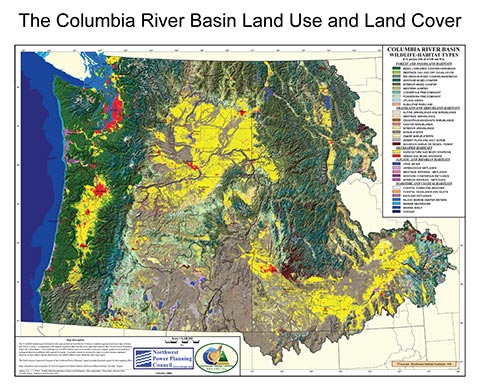Introduction
Energy, water, and land systems interact in many ways. Energy projects (energy production and delivery) require varying amounts of water and land; water projects (water supply and irrigation) require energy and land; and land-based activities (agriculture and forestry) depend upon energy and water. Increasing population and a growing economy intensify these interactions.1 Each sector is directly impacted by the others and by climate change, and each sector is a target for adaptation and mitigation efforts. Better understanding of the connections between and among energy, water, and land systems can improve our capacity to predict, prepare for, and mitigate climate change.
Challenges from climate change will arise from long-term, gradual changes, such as sea level rise, as well as from projected changes in weather extremes that have more sudden impacts. The independent implications of climate change for the energy, water, and land sectors have been studied extensively (see Ch. 4: Energy, Ch. 3: Water, and Ch. 13: Land Use & Land Cover Change). However, there are few analyses that capture the interactions among and competition for resources within these three sectors.1 Very little information is available to evaluate the implications for decision-making and planning, including legal, social, political, and other decisions.
Climate change is not the only factor driving changes. Other environmental and socioeconomic stressors interact with climate change and affect vulnerability and response strategies with respect to energy, water, and land systems. The availability and use of energy, water, and land resources and the ways in which they interact vary across the nation. Regions in the United States differ in their 1) energy mix (solar, wind, coal, geothermal, hydropower, nuclear, natural gas, petroleum, ethanol); 2) observed and projected precipitation and temperature patterns; 3) sources and quality of available water resources (for example, ground, surface, recycled); 4) technologies for storing, transporting, treating and using water; and 5) land use and land cover (see Ch. 13: Land Use & Land Cover Change). Decision-making processes for each sector also differ, and decisions often transcend scales, from local to state to federal, meaning that mitigation and adaptation options differ widely.
Given the many mitigation and adaptation opportunities available through the energy sector, a focus on energy is a useful way to highlight the interactions among energy, water, and land as well as intersections with climate and other stressors. For example, energy production already competes for water resources with agriculture, direct human uses, and natural systems. Climate-driven changes in land cover and land use are projected to further affect water quality and availability, increasing the competition for water needed for energy production. In turn, diminishing water quality and availability means that there will be a need for more energy to purify water and more infrastructure on land to store and distribute water. Stakeholders need to understand the interconnected nature of climate change impacts, and the value of assessments would be improved if risks and vulnerabilities were evaluated from a cross-sector standpoint.66




























